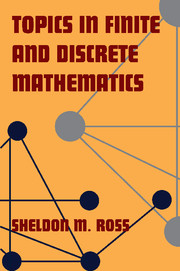6 - Directed Graphs
Published online by Cambridge University Press: 06 July 2010
Summary
Directed Graphs
A graph whose edges are assumed to have a direction is called a directed graph, or more simply a digraph. The edge (i, j) in a directed graph is interpreted as going from vertex i into vertex j, and it is graphically represented by drawing an arrow from vertex i to vertex j. Figure 6.1 presents a directed graph.
As with an undirected graph, any sequence of vertices i, i1, i2, …, ik, j for which (i, i1), (i1, i2), …, (ik, j) are all edges is said to be a path from vertex i to vertex j. For instance, 1, 2, 3, 6 is a path from 1 to 6 for the digraph of Figure 6.1.
The Maximum Flow Problem
Consider a directed graph with vertex set V and edge set A. Suppose that there are two distinguished vertices, the source vertex s and the sink vertex t, and suppose that there are no edges that either go into s or out of t. For each edge (i, j), suppose that a nonnegative integer c(i, j), called the “capacity” of the edge, is specified. The problem of interest is to flow a commodity from s to t according to the following rules:
(1) the amount of flow that can be sent along any edge is less than or equal to the capacity of that edge (the capacity constraint);
(2) for any vertex i not equal to s or t, the amount that is flowed into i must equal the amount that is flowed out of i (the conservation constraint).
Information
- Type
- Chapter
- Information
- Topics in Finite and Discrete Mathematics , pp. 150 - 179Publisher: Cambridge University PressPrint publication year: 2000
